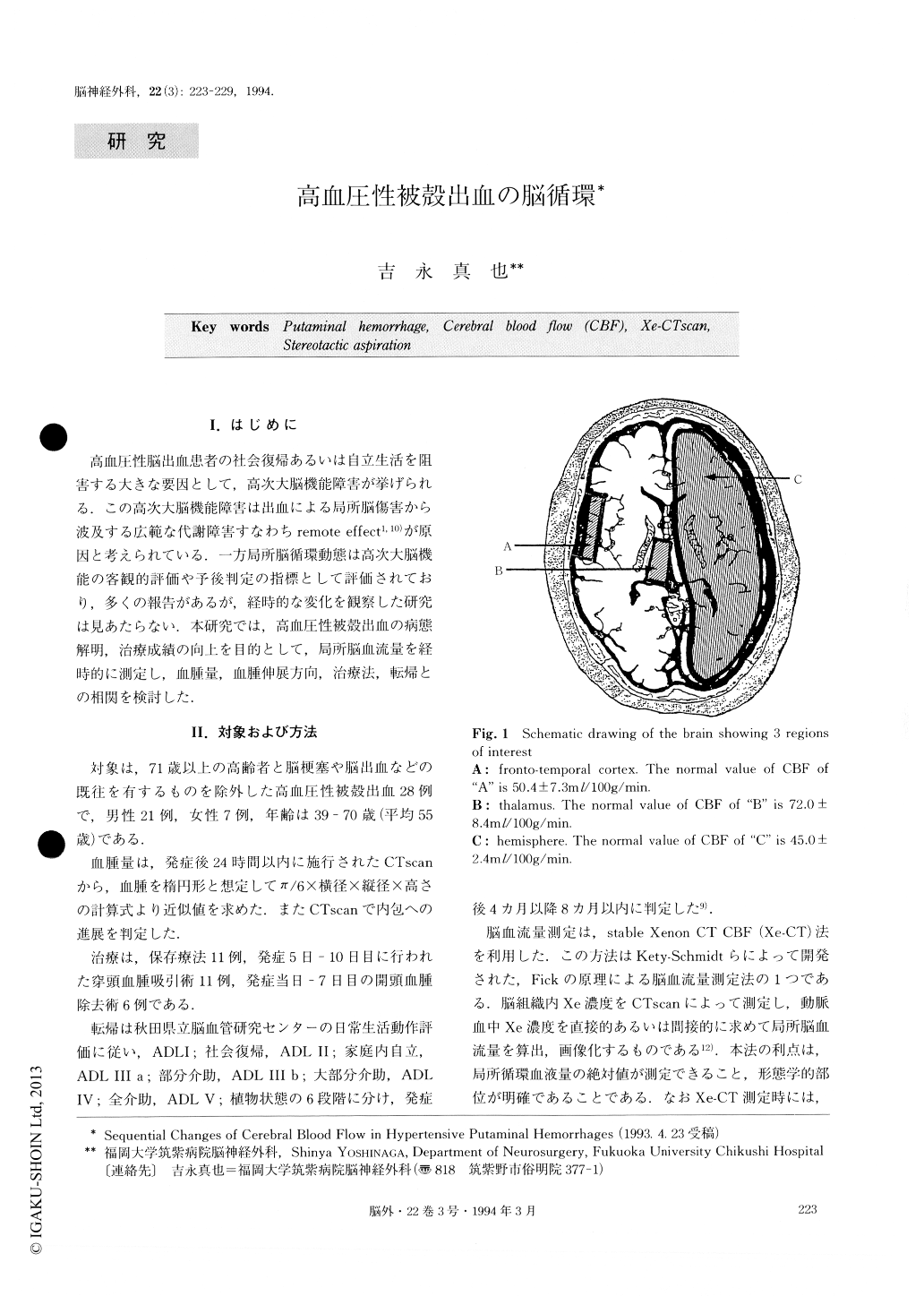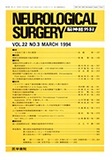Japanese
English
- 有料閲覧
- Abstract 文献概要
- 1ページ目 Look Inside
I.はじめに
高血圧性脳出血患者の社会復帰あるいは自立生活を阻害する大きな要因として,高次大脳機能障害が挙げられる.この高次大脳機能障害は出血による局所脳傷害から波及する広範な代謝障害すなわちremote effect1,10)が原因と考えられている.一方局所脳循環動態は高次大脳機能の客観的評価や予後判定の指標として評価されており,多くの報告があるが,経時的な変化を観察した研究は見あたらない.本研究では,高血圧性被殻出血の病態解明,治療成績の向上を目的として,局所脳血流量を経時的に測定し,血腫量,血腫伸展方向,治療法,転帰との相関を検討した.
Purpose: This study was designed to investigate the sequential changes of the CBF in hypertensive puta-minal hemorrhage and to attempt to correlate these data with the treatment and ADL.
Method: The CBF of 28 patients, aged from 39-70 years-old without any past history of cerebral insult, was measured sequentially from the acute stage by the xenon-enhanced CT method. Regarding treatment, 11 were treated conservatively, while 11 underwent stereo-tactic aspiration and the remaining 6 had an evacuation of the hematoma by craniotomy. Results and Conclusion: 1. The CBF of the hemi-sphere, thalamus and cortex progressively decreased un-til 16 weeks after onset, and then recovered gradually. However, the reduction in the CBF continued until reaching the chronic stage at a 20-40% reduction level on both sides. 2. A negative correlation between the CBF and the hematoma volume was noted and in hematoma over 15ml in volume, the CBF always de-creased below a level of 30ml/100g/min. 3. There was no correlation between the CBF and the hematoma ex-tension to the internal capsule. 4. There was a signifi-cant correlation between the CBF and ADL.
5. A hematoma measuring less than 15ml should be treated conservatively. 6. In hematoma measuring more than 15ml stereotactic aspiration proved to be more effective than other therapies not only for the recovery of the CBF but also for ADL.

Copyright © 1994, Igaku-Shoin Ltd. All rights reserved.


